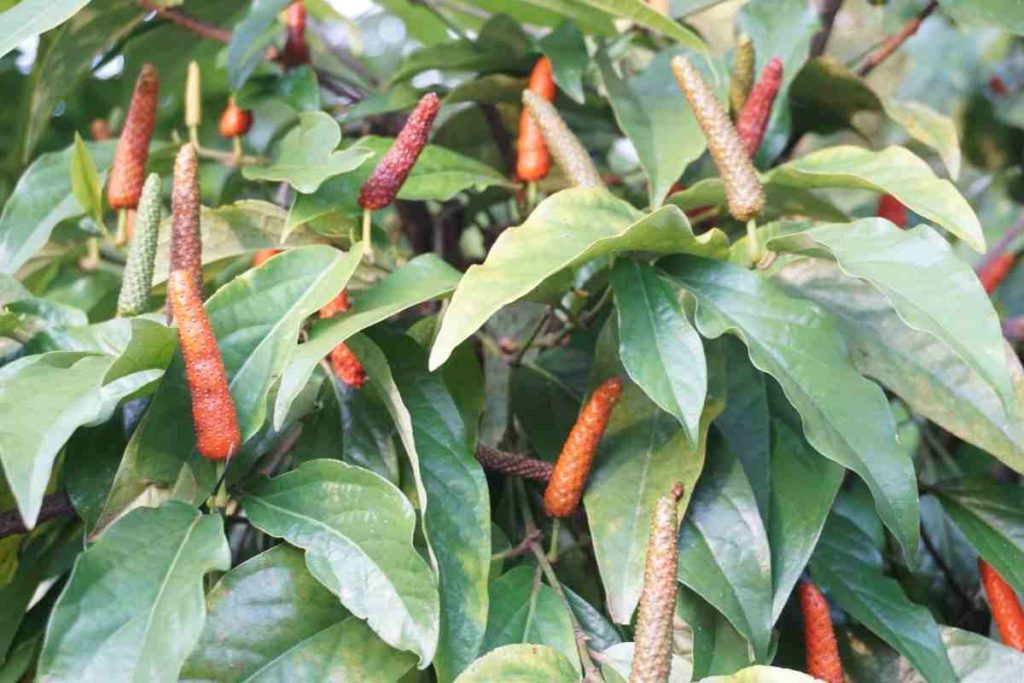
Table of Contents
Pippali
What does Ayurveda say about Pippali? Is it worth the hype? Learn more about Pippali’s morphology, Medicinal properties, and history in this article. Pippali is a pepper tree found in the Indian subcontinent. It belongs to the family Piperaceae. Its dried fruit is used as a spice and seasoning. Listed below are some of its most common uses.
What Ayurveda says about Pippali
What Ayurveda says about Pipeppali is that it’s an essential component of Trikatu, an herbal preparation composed of three pungents that helps combat disease. This herb is considered one of the most powerful Rasayana substances, meaning it’s capable of affecting the immune system, genes, and regeneration. Pippali is used to treat various ailments, including indigestion, bronchitis, and dyspepsia.
In Ayurveda, Pippali is a staple in home remedies for a variety of disorders. It’s an essential component of digestive and drinking formulas, and is an effective remedy for many ailments. In Ayurvedic medicine, Pippali is used for respiratory problems, digestive problems, reproductive health, and mental imbalances. Pippali’s pungent taste is said to stimulate the liver and improve metabolism. It’s also believed to help manage constipation.
As a lung rejuvenation herb, Pippali is especially helpful in spring, when children are more susceptible to cough and congestion. In Ayurveda, spring is the time of year when Kapha dosha imbalances flourish. Pippali can improve the condition of children with asthma by balancing the doshas in the body. It also can fight infection and increase immunity.
Piper Longum Morphology
The stem of the Piper species includes five distinct morphological characters. These features include the outer cortex, cortical and medullary vascular bundles, and the mucilage canal. Piper betle, as its name suggests, has multicellular trichomes. Morphological differences among piper species are discussed in this chapter. Despite the similarities in these characters, the stem of the different species varies greatly.
The stems and leaves of the different species of Piper are characterized by biconvex, non-glandular trichomes and a thick cuticle. The stems and leaves are separated into two distinct rings, the cortical ring being more complex than the medullary ring. The number of vascular bundles in each of the three ring layers varies among species.
The plant is widely distributed in South Asia and Southeast Asia, with populations in India, Malaysia, Nepal, Sri Lanka, and Vietnam. Its leaves are alternate and spreading, and lack stipules. The leaves of the Piper longum plant vary greatly in size, with the lower ones being 5-7 cm long, while the upper ones are only two to three centimeters long. Piper longum produces flowers and fruit in solitary spikes, which are 2.5-3.5 cm long. The fruits of the Piper longum are drupaceous and globular in shape.
The morphological properties of the plant include the leaf lamina, which is assessed visually. The leaves are either ovate or lanceolate in shape, and they often exhibit egg-shaped margins. In general, however, the lamina of the plant is oblong or heart-shaped, with sinuses at the base. The palm-like leaf shape is ovate in outline.
Medicinal uses of Pippali
Several health benefits are associated with Pippali, such as the ability to improve digestion, reduce gas and bloating, and cleanse the body. Other benefits of this plant include its ability to treat respiratory disorders, as well as a number of other conditions. In addition, it helps to treat insomnia and reduces the frequency of bowel movements. Medicinal uses of Pippali are numerous and vary according to the type of use.
As a tridoshic herb, Pippali is beneficial for all body types. Unlike black pepper, however, it is a good choice for Pitta patients, because its cooling effect post-digestive can soothe and reduce abdominal pain. It is best used in moderation and in small doses. Although Pippali has similar properties to black pepper, it is important to note that it is best taken in moderation.
The fruit of Pippali, also known as the long pepper, is often used to prepare medicine. This aromatic climber is widely used in traditional medicine and is a popular household spice in India. Its flavor is warm, pungent, and sweet, which make it an excellent choice to help fight a range of ailments. Pippali can improve digestion, increase fire, act as an aphrodisiac, and improve intelligence. The fruit has medicinal properties that extend beyond its flavor and uses, though it is still an herb in its own right.
